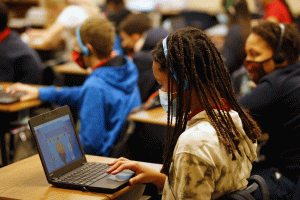Introduction:
Meet Dr.Kris AlEXANDER, an experienced educator and passionate gamer who has spent over a decade at the intersection of gaming and education. With a deep understanding of how gaming can revolutionize learning, He is dedicated to uncovering the educational power of gaming and its impact on student engagement and achievement.
1. The Intersection of Gaming and Education

In recent years, educators have increasingly turned to gaming as a powerful tool for enhancing learning experiences. At its core, gaming captivates players through interactive challenges, narrative immersion, and rewarding feedback loops. These elements align closely with educational objectives, making gaming an effective medium for delivering content and engaging students in meaningful learning experiences.
2. Benefits of Gamified Learning
Gamified learning offers a plethora of benefits that traditional teaching methods often struggle to achieve. Firstly, gaming enhances engagement by tapping into students’ intrinsic motivation to progress and succeed within the game’s world. This heightened engagement translates to increased attention, participation, and ultimately, retention of knowledge.
Moreover, gamified learning promotes personalized learning experiences. Through adaptive algorithms and branching narratives, games can tailor content and difficulty levels to match individual students’ abilities and preferences. This individualized approach ensures that every student receives instruction at their appropriate level, fostering a sense of mastery and accomplishment.
Additionally, gaming fosters the development of a diverse range of skills, from problem-solving and critical thinking to collaboration and communication. In multiplayer games, students learn to work together towards a common goal, honing their teamwork and social skills in the process.
3. Strategies for Implementing Power of Gaming
Integrating gaming into education requires careful planning and consideration. One effective strategy is to incorporate game-based assessments, where students demonstrate their understanding and skills within the context of a game. These assessments provide a more authentic and engaging way to evaluate student learning while allowing educators to gather valuable insights into students’ strengths and areas for improvement.
Another approach is to leverage educational gaming platforms that offer a wide range of games specifically designed for learning purposes. These platforms often provide analytics and progress tracking features, enabling educators to monitor student performance and adjust instruction accordingly.
Furthermore, designing gamified curricula can transform traditional lesson plans into dynamic and interactive learning experiences. By incorporating game elements such as quests, challenges, and rewards, educators can create a more engaging and immersive learning environment that motivates students to actively participate and learn.
4. Case Studies: Successful Integration in Schools

Numerous schools and educators have embraced gaming as a means of enhancing learning and student engagement. For example, a middle school in California implemented a math game that allowed students to practice mathematical concepts through solving puzzles and completing challenges. The game not only improved students’ math skills but also boosted their confidence and motivation to learn.
In another case, a high school history teacher in New York City used a historical simulation game to immerse students in key events and periods of history. By experiencing history firsthand through the game, students gained a deeper understanding of historical events and developed critical thinking skills as they navigated complex political and social dynamics.
5. Power of Gaming and Overcoming Challenges
Despite its benefits, integrating gaming into education faces challenges and misconceptions. One common concern is the potential for excessive screen time and its impact on students’ health and well-being. However, research suggests that when used in moderation and with purpose, gaming can be a valuable educational tool that enhances learning without detriment to students’ overall health.
Accessibility is another consideration, as not all students may have access to the necessary technology or resources to participate in gamified learning activities. To address this challenge, educators can explore alternative methods of incorporating gaming elements into their instruction, such as board games or low-tech simulations.
Additionally, some educators may be skeptical of the academic value of gaming and its ability to support learning objectives. However, numerous studies have demonstrated the effectiveness of gamified learning approaches in improving student outcomes and fostering deeper engagement with course material.
6. The Future is Power of Gaming
As technology continues to advance, so too does the potential of gaming in education. Emerging technologies such as virtual reality (VR) and augmented reality (AR) offer new opportunities for immersive and interactive learning experiences. Imagine students exploring ancient civilizations through VR simulations or conducting virtual science experiments in a simulated laboratory environment.
Furthermore, the rise of gamified assessments presents a shift away from traditional testing methods towards more authentic and engaging forms of evaluation. By embedding assessment tasks within games, educators can assess students’ understanding and skills in real-time while providing immediate feedback and support.
In conclusion, gaming has the power to revolutionize education by making learning more engaging, interactive, and personalized. Through thoughtful implementation and strategic planning, educators can harness the educational potential of gaming to inspire students, foster a love of learning, and prepare them for success in the digital age.
Conclusion: Embracing the Educational Power of Gaming
As Dr.Kris AlEXANDER has demonstrated through her expertise and experiences, gaming has the potential to transform education by creating dynamic and immersive learning experiences that captivate students’ imaginations and deepen their understanding of course material. By embracing gaming as a tool for learning, educators can unlock new opportunities for innovation, collaboration, and student success. Let us embark on this journey together, leveling up learning through the power of gaming.




